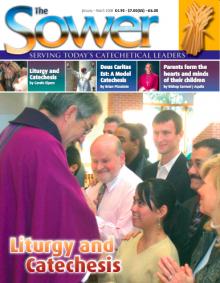From the beginning of time, God has revealed himself to humanity through his judgments, his laws, which are true and righteous and emanate from the heart of love and goodness in the Trinity. As Pope Benedict XVI writes: ‘The law is the visibility of the truth, the visibility of God’s countenance….’
The relationship to God and to his judgments that once came through the law and the prophets now comes in greater fullness through personal relationship in Jesus Christ who fulfilled that law. It is important for us as Christian catechists to understand about God’s judgments in our own lives. As we learn to identify these judgments of love and discipline and then come to trust and love them, we draw nearer to our Father and share more completely in the mission of the Son.
In Part I of this article we saw how important it is for Christians to learn how to line up with God’s judgments by ‘agreeing’ with them quickly and so allow them to purify and make us more like Christ. In this second part, we’ll further consider the form God’s judgments may take in our daily lives.
God uses every circumstance, every person, and every aspect of life to communicate with his children. No evil or difficulty is greater than his ability to transform it and work it—sometimes in the form of discipline necessary for growth in humility and love— for the good of those who love him. The Scriptures give us many examples of God’s judgments coming to whole peoples as well as to individuals. These inspired accounts, particularly those about individuals such as David and St. Paul, greatly aid us in our struggles to identify and come to grips with God’s way of speaking directly into our own lives. The stories of the saints also supply these helps, for here also are real human beings who have also obviously found the secret of loving God’s life-changing judgments.
The rest of this online article is available for current Guild members.
This article is from The Sower and may be copied for catechetical purposes only. It may not be reprinted in another published work without the permission of Maryvale Institute. Contact [email protected]

















